Contents
We hear the term “Design Thinking” dropped so many times in the consulting world these days, we can’t even keep up with it. But why does everyone want to adopt this mysterious, seemingly one-size-fits-all solution.
In this article, we attempt to give you an overview of the Design Thinking methodology, and how small and large organizations in various industries can benefit from adopting it.
We will also cover topics including:
- the 5 steps of the Design Thinking process
- Design Thinking consulting
- reframing complex problems
- Design Thinking in Education
- Design Thinking in Marketing
- Design Thinking in Entrepreneurship
What is Design Thinking?
The official definition states that as a solution-based approach to problem-solving, Design Thinking emphasizes creative, practical thought. This combined technique and methodology requires finding less obvious solutions to difficult problems. That often requires stepping out of your comfort zone to achieve it.
Design Thinking premises better understanding the wants and needs of customer. We do so by observing them in their natural environment, in everyday situations.
As such, Design Thinking deals more with listening than asking, then testing and iterating multiple solutions. It aims to develop the best possible solution with its set of intuitive principles bound to bring simplicity in complex business situations.
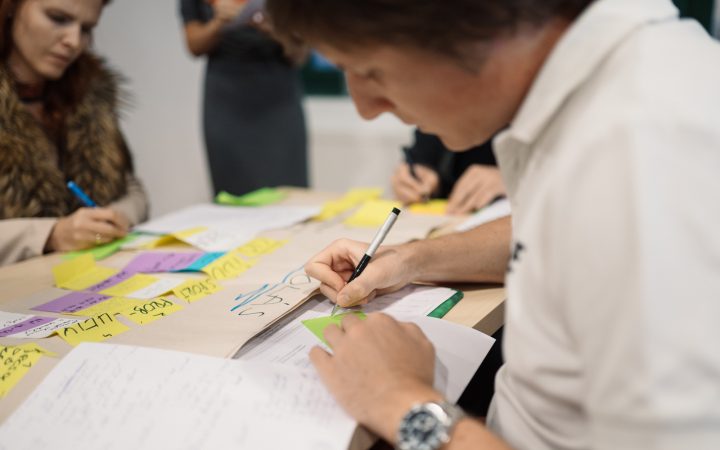
How businesses can profit from having a Design Thinking strategy
Although still a somewhat underused approach to simplifying processes and relationships (eg. demand and supply; people and technology), Design Thinking has a created competitive advantage among businesses.
Using traditional parts of the design toolkit ( empathy, understanding, contextual imagination and prototyping), Design Thinking helps businesses better identify, understand, and address the problems that plague them and their customers.
What constitutes Design Thinking consulting?
People often quote Henry Ford saying, “If I’d asked them what they wanted, they would have said faster horses”.
We can debate whether he ever actually said this but the point holds true. User research takes much more than simply asking people what they want. Most of the time, they don’t know!
OK, let’s look at an example. We talked to UX designers about how they present their portfolios and the bottlenecks they experience. They answered that they wished platforms gave them more flexibility. They mentioned the particular gruesomeness of the pdf-only policy when showcasing complex case studies. In their response, they wished to have more formats to upload.
So, what did we use this information for? We built a whole new, completely customizable platform for them. It supports storytelling over formats and makes creating UX portfolios a breeze. We call it UXfol.io. Check it out.
The Design Thinking methodology
We have some luck due to our user access and research in-house. We do user research for a living, after all. For other types of companies, testing and gathering user insights in a structured and efficient way can get truly problematic.
Design Thinking consulting comes into the picture here. Design Thinking experts bring with them a tried and tested methodology to tailor to the needs of use in any industry.
Design Thinking consulting involves fitting the methodology and your needs to each other. At the same time, it makes sure that you as a company can keep on going, long after our consultants leave your premises.
5 Stages in the Design Thinking process
At UX studio, everything we do revolves around Design Thinking. We understand that behind every business problem, people are experiencing that challenge first-hand. So we approach every internal and external challenge with the Design Thinking approach in mind.
The Hasso-Plattner Institute of Design at Stanford proposed the traditional five-step model of Design Thinking.

Gain an empathic understanding of the problem.
Goals:
- Understand people’s experiences and motivations as well as the physical environment they exist in;
- Gain a deeper personal understanding of the issues involved, through empathy.
Techniques:
- Consulting experts about the area of concern;
- Observing, engaging and empathizing with people experiencing the problem.
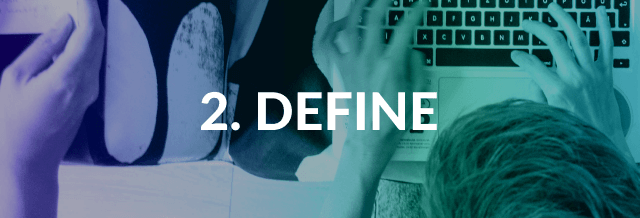
Analysis to arrive to a human-centered problem statement
In this stage, we put together the data and information gathered during the first stage.
Goals: Define the core problems you and your team have identified up to this point. You should:
- Seek to define the problem as a problem statement in a human-centered manner;
- Have your team gather great ideas to establish features, functions, and any other elements that will allow them to solve the problems;
- Start to progress by asking questions which can help you look for ideas for solutions.
Techniques:
- Analyze and synthesise your observations

Generate ideas and alternative POV’s
Goals:
- Come up with as many ideas as possible, using ideation techniques that encourage free thinking (brainstorming, “worst possible idea”);
- Find the best way to either solve a problem or provide the elements required to circumvent it – investigate and test your ideas using other ideation techniques.
Techniques:
- Ample ideation techniques such as brainstorming, brainwriting, “worst possible idea”, and “SCAMPER” abound.
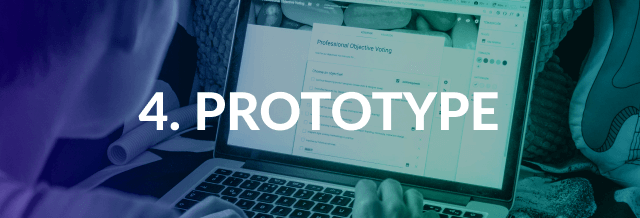
Experiment with solutions generated
Goals:
- In this stage, we produce a number of inexpensive, scaled-down versions of the product or features so we can investigate and test solutions generated in the third stage;
- By the end of this stage, we will have a better idea of the constraints inherent to the product and the problems present;
- We will also have a clearer view of how real users would behave, think and feel when interacting with the end product.
Techniques:
- Implement solutions within the prototypes;
- One by one, investigate and either accept, improve and re-examine, or reject them on the basis of the users’ experiences.

Test the complete product using the best solutions identified
Goals:
- Alterations and refinements to rule out problem solutions;
- Derive as deep an understanding of the product and its users as possible.
Techniques:
- Continuous testing and gathering insights.
Although this stage comes last, it forms all an iterative, non-linear process. For example, different groups within the design team may conduct more than one stage concurrently, or the designers may collect information and prototype during the entire project to enable them to bring their ideas to life and visualize the problem solutions.
The bottom line: Design Thinking tackles complex problems by utilizing five steps, some perhaps non-linear.
- Empathize: Try to understand human needs involved in the problem.
- Define: Reframe and define the problem in human-centric ways.
- Ideate: Create many ideas using different ideation techniques.
- Prototype: Start building cheap, low-effort solutions to get a better understanding of feasibility and bottlenecks.
- Test: Develop a prototype/solution specifically to solve the original problem, and then keep iterating.
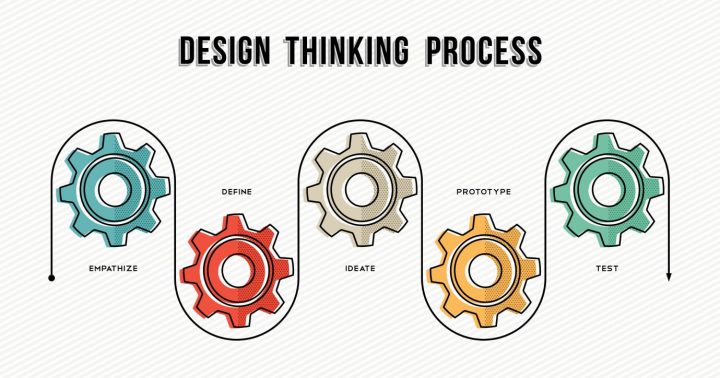
Learn how to reframe problems
Sometimes the hardest part of Design Thinking comes when figuring out how to bring it back to your workplace. Here, it”s not about exercises and homework anymore — you’re suddenly out in the real world.
We work side-by-side with our clients on the best ways to apply the Design Thinking process. This in turn, gets results for complex, messy problems that require human-centered innovative solutions.
How have we supported our clients in applying Design Thinking in the workplace? We have helped them:
- Gain insights into their customer’s experience;
- Create new products, processes and services;
- Build more collaborative and creative teams;
- Incorporate user feedback into product cycles;
- Redesign how sales teams, product engineers, and marketing and communication teams engage with customers; and
- Apply Agile methodologies.
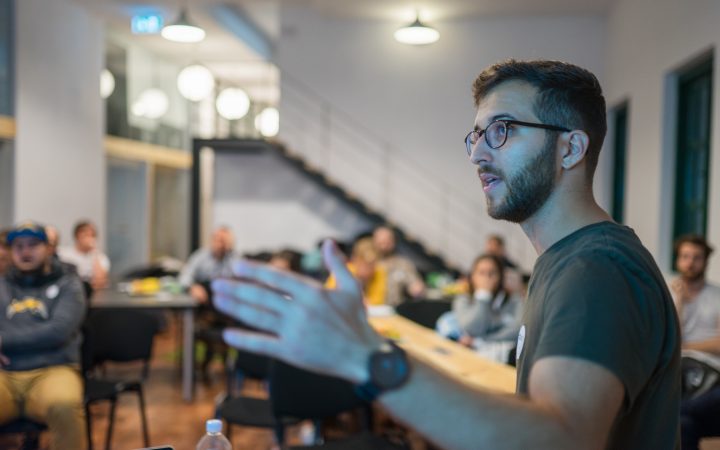
Design Thinking in Education
In the last couple of years, education has witnessed an explosion of interest in Design Thinking.
We can implement Design Thinking into the daily workings and processes of school culture. Illustrious companies and institutions like IBM, Harvard and Stanford have gathered many ready-made Design Thinking-based educational activities that wait for you to go and try them in the classroom.
To mention a few examples, adopting Design Thinking has helped educators all over the world get better in:
- Leading with empathy – Empathize better with beginners of a study domain so that you can immerse yourself in how others experience your school and classes.
- Challenge assumptions – This approach lets us see that both children and adults as truly capable of doing. Introducing possibility as an option can start a shift from how we view and do things in an educational setting. Useful phrases to integrate in your daily lexicon include “What if. . . ?” and “How might we. . . ?”
- Experiment often – Stop just attending meetings, and speak up, “What experiment or easy hack could we try to truly figure this out?” Just try, observe, reflect, and try again to get it right.
- Share your progress – Transparency and openness hold the key to thriving in Design Thinking. Ask questions, and share your findings and progress with others.
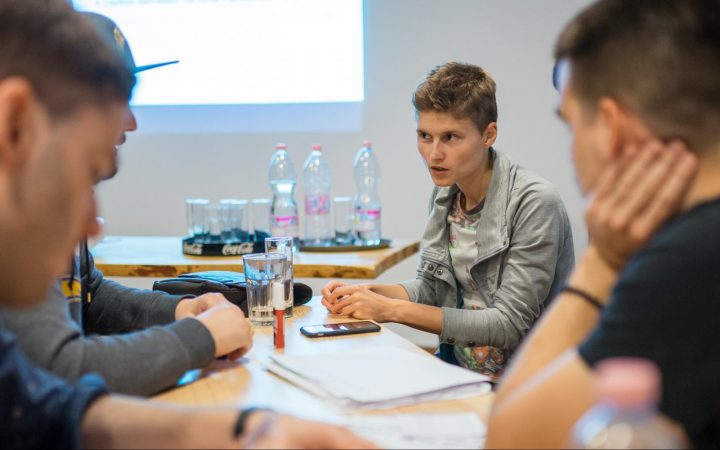
Design Thinking in Marketing
Consumers have unprecedented choice. They can make purchase and brand loyalty decisions based on highly specific preferences. Design Thinking helps teams properly define the focus.
Try these three ways to implement Design Thinking in your marketing team starting today:
- Always put the customer first – OK, this oldie still ranks a goldie! Just like the masterminds of Mad Men, marketing teams still tend to prioritize gut instincts over insights. We often rely on past experiences and existing knowledge to determine future actions. Keep on researching and getting to know your targets! You can never have enough research insights.
- Include other disciplines/departments in your planning – Marketers often get complaints from their fellow engineers and designers for not working collaboratively enough or with understanding, but just constantly pushing the others. They also have to collaborate with others. Listen to everyone’s inputs, and make compromises based on feasibility and resources.
- Develop a risk-taker culture – Design Thinking teaches us to fail quickly and fast, and to not sweat it. Just like in product development, experiment and iterate in your marketing methods as well.
Design Thinking consulting firms help marketing teams look at their problems in a whole new way. To learn more, I recommend you check out this article about how an agency revamped their whole SEO strategy using Design Thinking principles.
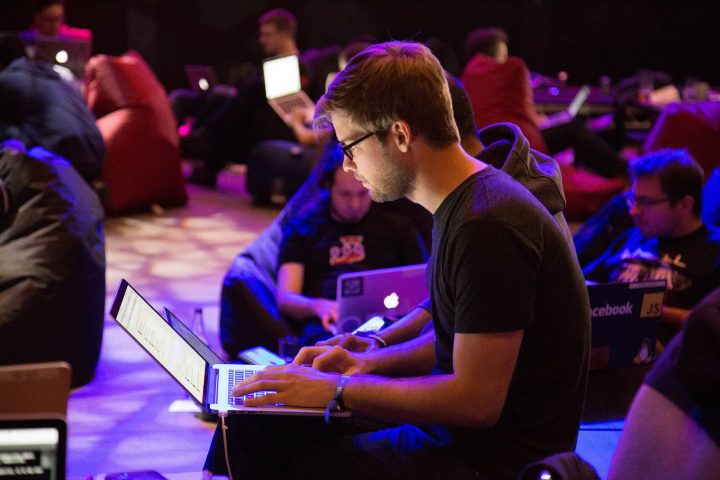
Design Thinking in Entrepreneurship
For startups and entrepreneurs, Design Thinking comes into play when trying to generate bold ideas. Based on scientific methods, it provides entrepreneurs with inspiration, and tools and techniques for ideation and implementation.
Design Thinking methods help any group or organization become more empathetic and create human-centered solutions. For entrepreneurs specifically, the most significant three things that Design Thinking delivers comprise:
- Inspiration: Observe customers in their own environment to identify their latent needs. If you manage to see the world differently than others and thus capitalize on needs that your competition hasn’t taken the time to recognize, you find a niche.
- Ideation: Develop new ideas based on observations to address latent needs.
- Implementation: Test assumptions of new ideas to continuously shape them into viable opportunities. Failing quickly and often helps in not killing an idea but to make it better.
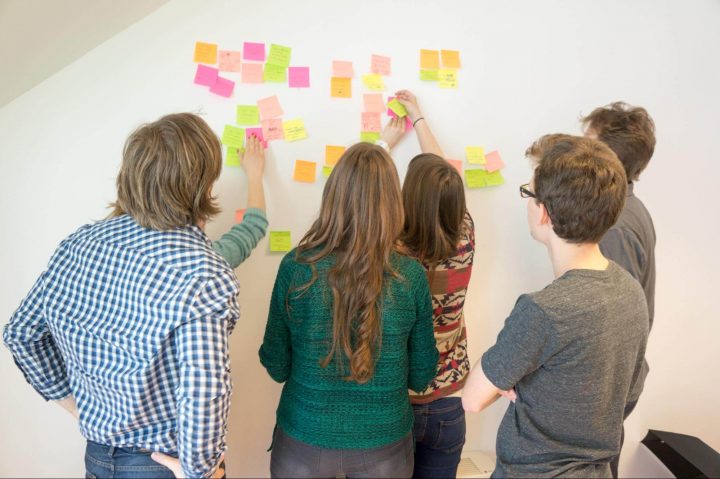
Working with Design Thinking experts
When you partner with UX studio, you get a connected team of design talent in our open environment to efficiently find solutions, explore and design creative options, create new products or services, and imagine more.
During Design Thinking workshops, and consulting / ideation sessions, we investigate how your company could benefit from the Design Thinking methodology, and what it would take to implement these new mechanisms in your system. We do so using one or more concrete, hands-on examples, so your employees can experience Design Thinking benefits first-hand.
We make innovation our core focus – pairing creativity and strategy to design effective solutions. We want to solve your toughest problems and work together on your greatest opportunities with our collaborative team and Design Thinking capabilities.




